What does horse chestnut look like and how to grow it?
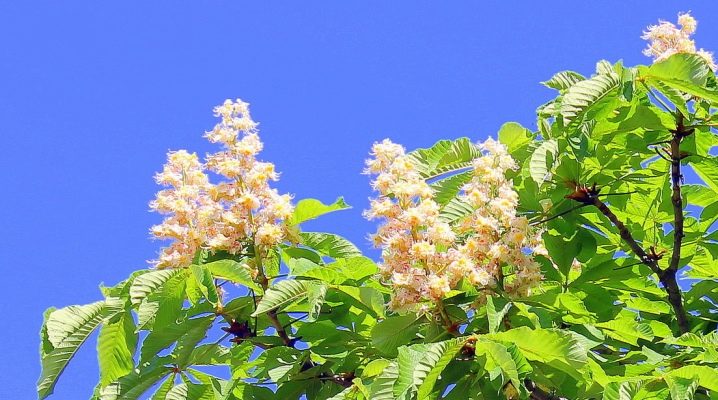
Horse chestnut is a genus of beautiful landscape gardening trees and shrubs that have an ordinary shape, as well as other species that are planted everywhere when landscaping. Despite the fact that the plant is widespread, not all summer residents know what its leaves, flowers and seeds look like. To figure out where it grows in Russia, which places are best suited for planting, to learn about diseases and other features, a detailed description with an overview of the most important stages in the life of this tree will help.
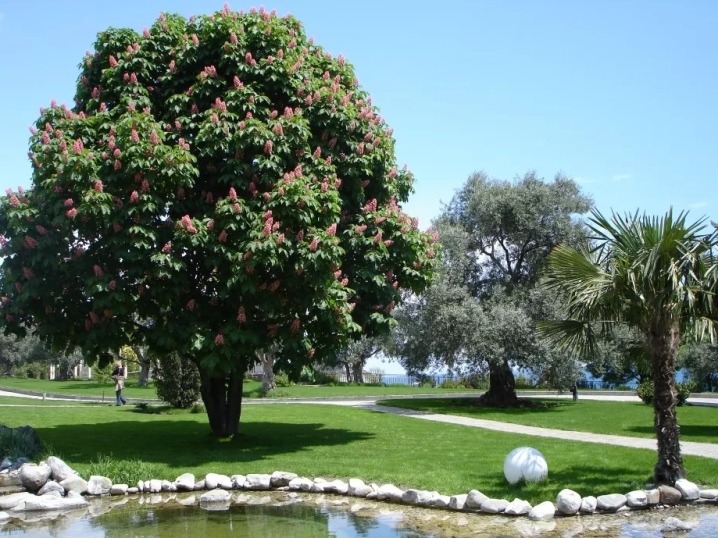
What it is?
Horse chestnut is considered one of the most popular tree species that adorn garden and park landscapes... It looks majestic and impressive, very beautiful during the flowering period, and, at first glance, differs from edible only in fruits. They are not suitable for human consumption and may even cause poisoning. In fact, the difference is much deeper. Although the plant got its name to make it easier to distinguish from the usual.
In fact, the horse chestnut and the true chestnut are not even related. The first is part of the Sapindovy family, and combines several subspecies at once. The second is related to the beech. Its leaves are not very decorative, the fruits of a true or ordinary chestnut have a brown shell covered with thorns, a sweet taste. In the horse, they are noticeably bitter, enclosed in a green skin.
To understand what this plant looks like, it will help to study its botanical description.
For trees and shrubs of the horse chestnut, a not too high growth rate is characteristic in the first years, more active growth begins from 10 years after planting. They also enter fruiting only after 15-25 years.
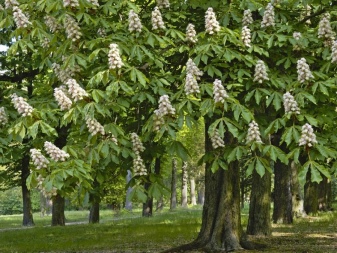
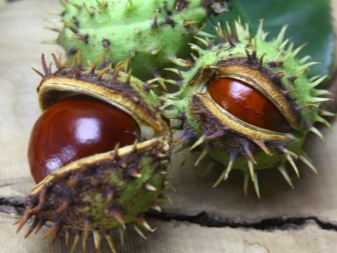
Other characteristic features of the horse chestnut include:
- trunk height up to 25 m;
- dense, well-formed crown of wide oval, conical or spherical shape with a diameter of 5 to 20 m;
- complex leaf shape with 5-7 finger cuts;
- root system of a surface type, intensively growing;
- inflorescences racemose, pyramidal, individual flowers are bell-shaped;
- fruits in the form of capsules with walnut seeds inside.
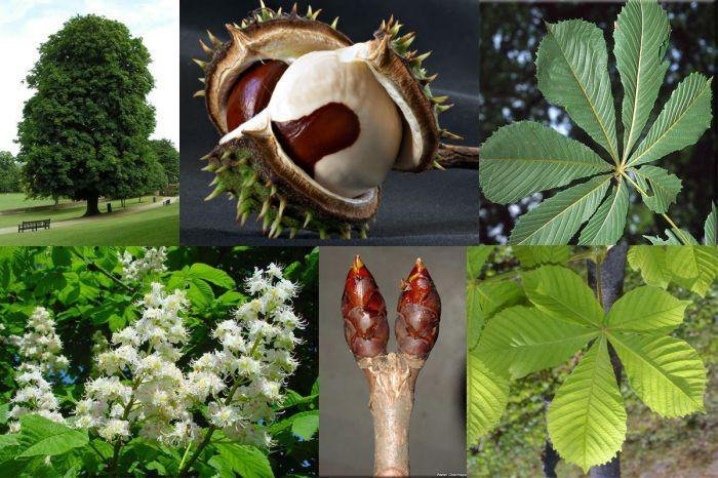
The shrub form also does not grow very quickly, while at the same time it reaches a height of 1.5 to 5 m. It has a rather wide lush crown, which easily forms into a columnar or pyramidal one when used decoratively. All horse chestnut species bloom from May to June. It is highly valued as a honey plant and can be planted next to an apiary. All forms of trees and shrubs of the genus, except for terry, have nectar.
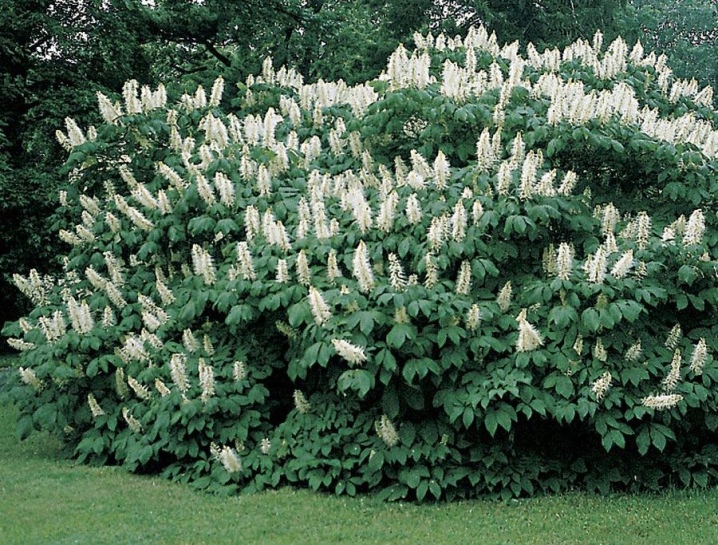
Spreading
In nature, the homeland of the horse chestnut is considered to be the territories of southern European countries, as well as the East Asian region and northern India. It is also very common in North America. It is here that the whole variety of horse chestnut species is represented. Among the cultural forms in Russia, 13 varieties of this tree grow. It is successfully grown in the middle lane, getting not too tall, compact versions of the horse chestnut; there is experience of planting this tree in Siberia, in its southern regions.
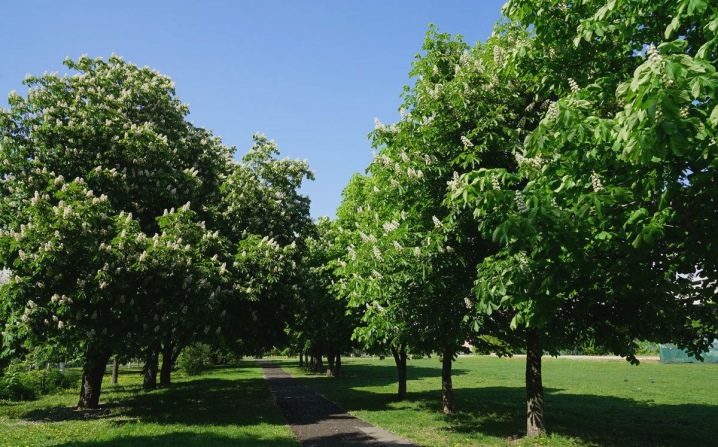
Review of popular subspecies
More than 15 species of horse chestnut are cultivated today. Their height is less than that of wild plants, the tree begins to bear fruit at the age of 20 or a little earlier, while the seed pods are of exclusively decorative value. But flower buds are laid on it regularly, creating a special atmosphere in the garden and park landscape. The most popular subspecies of this plant are worth studying in more detail.
Ordinary
The most widespread type of chestnut in Russia. The form is treelike, with a wide-oval thickened crown, forming a dome as it grows. The edges of the lateral branches in mature trees are drooping, sloping towards the ground. The inflorescences are white, very tall - up to 35 cm. In this species of horse chestnut, the root system has a central core, as well as side shoots, which successfully receive nitrogen from the air due to special bacteria.
Among the popular varieties of this variety are:
- "Baumani" with unusual double flowers;
- Hampton Court Gold with the original shape and color of the leaves;
- Pyramidalis with a compact pyramidal crown.
Plants tolerate the gas-polluted atmosphere of big cities well, but are not too cold-resistant. In the conditions of severe winters in Moscow or St. Petersburg, it can freeze a little.
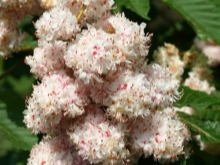
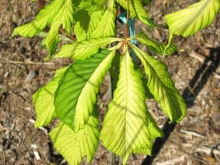
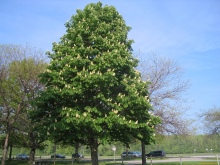
Pink
A variety of meat-red horse chestnut (Aesculus x carnea) is known under this name - a hybrid that does not occur in nature. It forms a central trunk up to 10 m high, a conical spreading crown. Flowers are collected in tall pink candles. This variety is considered one of the most resistant to adverse external factors, it tolerates planting well in an urban environment, including near highways.
A particularly popular form of pink horse chestnut is grade "Briotti". It looks spectacular already in adulthood, when a dense spherical crown up to 8 m in diameter is formed on the tree, strewn with lush candles of bright pink inflorescences in May-June.
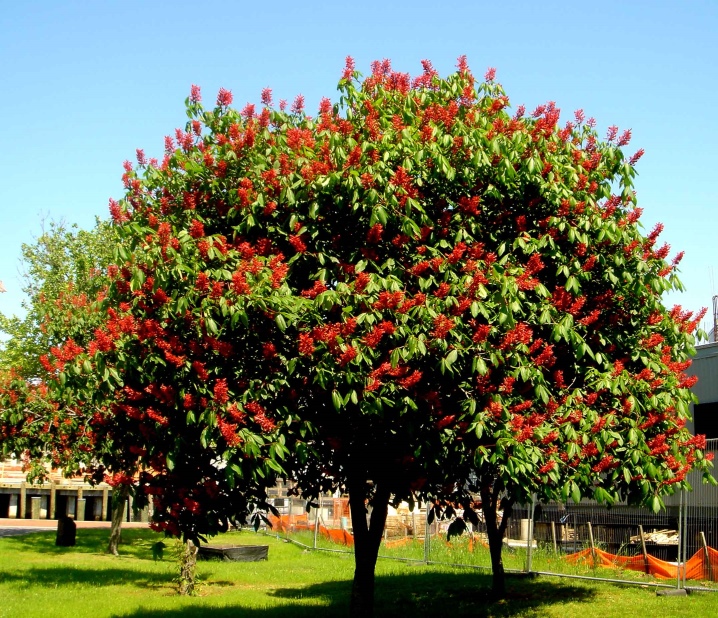
Small-flowered
A popular form, widespread in the United States, in the southern states. This is a shrub, reaching a height of 5 m, with a thickened branchy crown. Its inflorescences look unusual due to paniculate pistils with stamens. This culture is demanding to care for, it needs special attention.

Japanese
This variety of horse chestnut is tree-shaped with a straight and rather thin central trunk, relatively compact crown... Most of all, the plant is appreciated for the interesting color of the flowers - they are yellow, as well as for the pear-shaped shape of the fruit-boxes. Initially, this variety was cultivated in Japan, and later became widespread in North America. In Russia, it is found in the climatic zone of the Far East.
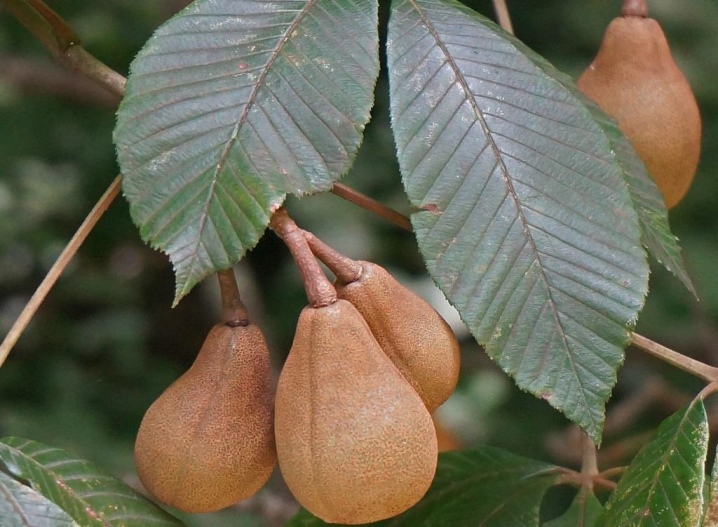
Landing
In the choice of soil, the horse chestnut is quite whimsical. It is recommended to place seedlings in fertile and loose soils. The best choice would be black soil, they also feel good on loam with a lime content.
Trees and shrubs of this kind need a lot of free space. It is customary to plant them at a distance of at least 5 m between adjacent plants in the alley.
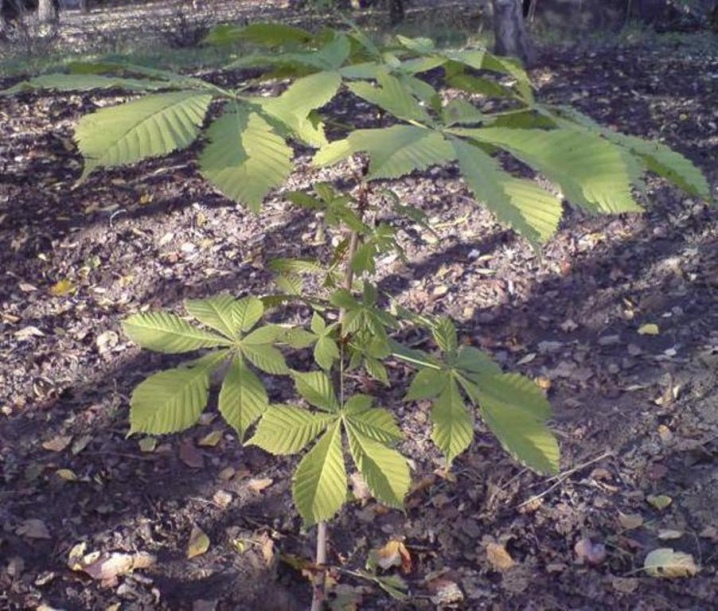
For cultivation in a summer cottage or personal plot, it is better to choose not too tall forms of horse chestnut. 1-2 year old seedlings from nurseries with a closed root system take root well. They can be planted in autumn, spring and even summer. The procedure will be as follows.
- Preparation of square pits... Their dimensions should exceed the dimensions of the seedling roots by 15-20 cm.
- The excavated soil is mixed with humus and sand in a 2 to 1 ratio. Mix thoroughly. Then slaked lime and dolomite flour are added to the soil mixture - 0.5 kg each.
- The bottom of the pit is drained with pebbles or gravel. The thickness of the pillow must be at least 150 mm. Part of the soil mixture is laid on top of it. Mineral complex fertilizers are added to it.
- Most of the remaining soil is filled up... It is formed in the form of a pyramid if the seedling has an open root system. The plant is placed on top of the mound. It is sprinkled with the rest of the soil mixture so that the root collar is slightly above the edge of the pit (for large-sized plants).
- Watering is in progress... The soil is compacted by hand. You can additionally mulch or use agrotextile by cutting a hole in it for a seedling.
- In the early years, the seedling is attached to the support. It can be dug into a hole along with a tree. Shrub forms do not require props.
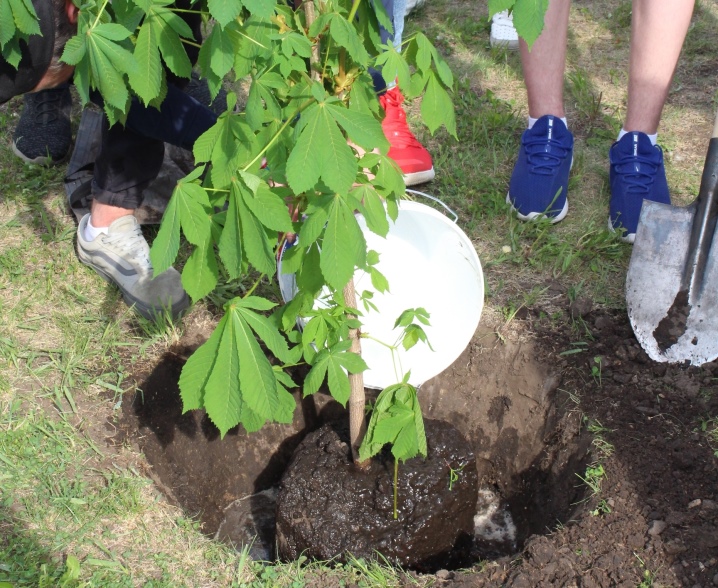
The process of planting a plant with an open root system is slightly complicated by the root preparation stage. They are pruned, removing dry parts, soaked, if necessary. Before planting, you can dip the roots in a dung-clay mash.
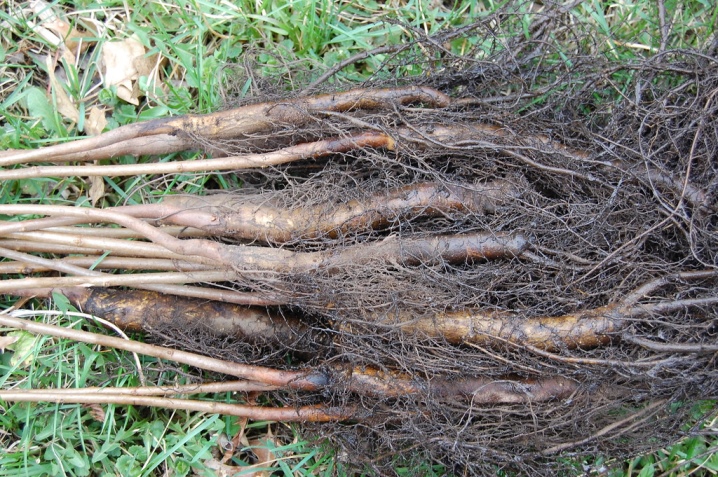
Care
Horse chestnut is not too picky about care if it grows in warm and temperate climates. Low winter hardiness complicates its cultivation in the north and in Siberia in the open field. Here it is better to choose forms adapted to the climate of these regions.
The main care of a plant is the formation of its crown. Pruning trees and shrubs on the site does not particularly harm them. It is customary to carry out it at the end of the leaf fall period, in the fall. Professional gardeners prefer to shape the crown in winter, when its outline is clearly visible. In the summer, old and diseased shoots are removed.
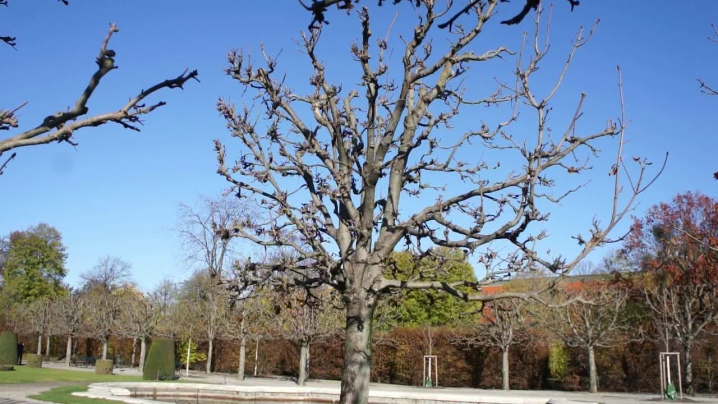
Formation is carried out necessarily with the formation of a central shoot. Also, when pruning, it is worth considering the following points.
- Shoots near dormant buds and cuts are cut or plucked.
- Branches are formed according to the umbrella type or with a drooping, pronounced slope.
- Corrective haircuts are performed from 15-20 years of the tree's life. All powerful vertical shoots emanating from horizontally located branches are removed at this stage. This will eliminate the uneven development of the crown.
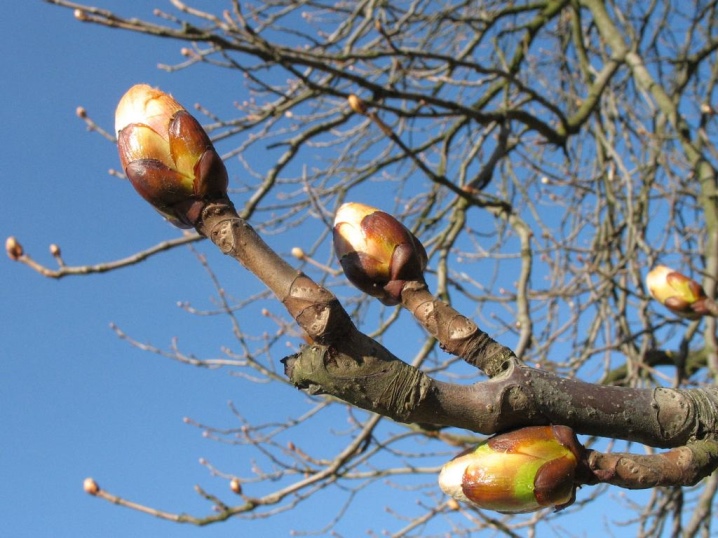
For the winter, young horse chestnuts must be protected by falling asleep foliage in the trunk circle. Stamp forms are wrapped with burlap in 2 layers. This avoids frost burns on the barrel surface. The rest of the time, the near-trunk soil is mulched with a mixture of compost and peat with a thickness of at least 100 mm.

Also, the plant must be fed - in the spring and autumn periods. It is carried out using organic or complex fertilizers. Active watering is required only in the first week after planting. At this time, 10 liters of water per day are introduced under the root. In extreme heat, adult horse chestnuts are also watered, saturating the soil with moisture at the rate of 1 bucket per 1 m2 of crown projection.
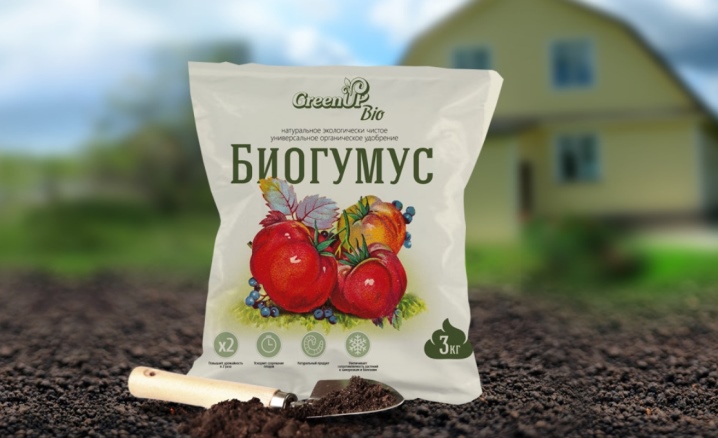
Reproduction
Horse chestnut reproduces successfully in both vegetative and generative ways. Depending on the chosen method, the work is carried out in the spring or autumn period. In nature, trees and shrubs most often form young shoots, dropping fruits to the ground. In the case of artificial propagation, you can choose one of the following methods.
- Seeds... In autumn, the fruits of the horse chestnut are harvested, placed in an open box with sand for 10 days in a cold room. After this period, you can move them to the site for obtaining seedlings, buried in the ground by 60 mm, leaving a distance of about 150 mm between rows and plants. Dig in, cover with fallen leaves. In the spring, wait for shoots, leaving the most viable of them - by autumn, the height of the shoots will reach 20 cm.
- Cuttings... This breeding method is quite popular and is used in springtime. Cutting involves cutting half-lignified shoots from a plant at least 5 years old, followed by dividing them into segments of 3 internodes each. The cuttings are planted on a special bed with a drainage pad and fertilizers, cutting off their edge along an oblique line, and then treating it with a growth stimulator and crushed activated carbon. Rooted plants are kept for 1-2 years, then transferred to new places.
Shrub forms of horse chestnut can also propagate by root layers or by dropping side shoots. The process of performing work in this case will be quite standard.
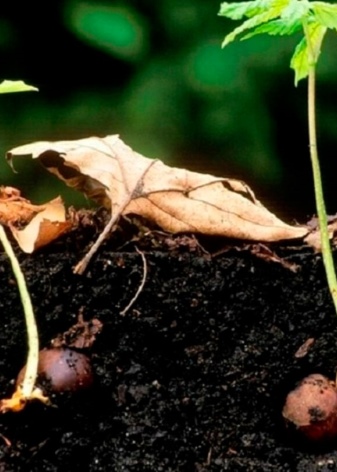
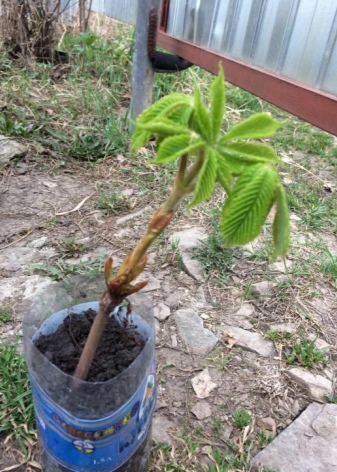
Diseases and pests
The list of diseases from which horse chestnut suffers is quite extensive. It is not resistant to fungal infections. Most often, trees and shrub forms suffer from the following diseases.
- Rust... It manifests itself as reddish-yellow spots on the leaves. It is associated with a violation of chlorophyll synthesis. Most often occurs when the composition of the soil is not suitable at the planting site.
- Brown spotting. Fungal infection that affects the leaf plates, and then other parts of the plant.
- Black spot... The leaves affected by this infection dry up and become covered with characteristic dots of a charcoal shade.
- Hole spot... With this disease, perforation forms on the surface of the leaves, which gradually grows. Their color becomes brown. In the absence of adequate treatment, the tree may develop a lesion of the bark, with characteristic growths, ulcers and swelling.
- Powdery mildew. The fungal infection usually attacks young plants. When infected, a white bloom appears on the leaves. They get wet, covered with fungal spores, gradually die off. Without treatment, the tree dies.
- Tissue necrosis. The death of sections of the tree can get due to exposure to direct rays of the sun. Burns are also called lesions caused by frost, chemicals. Necrosis can be stem or develop under the bark, caused by fungal spores. The affected area is cleaned, treated with antiseptics and fungicides, and covered with garden varnish.
- Rot... It can be root and stem, caused by pathogens of fungal infections. Affected trees are treated with fungicides; with a significant amount of damage, the plants have to be destroyed.
- Tinder... This parasitic fungus appears on the surface of the tree trunk, sending its spores into the depths. Gradually, it changes the structure of tissues, causes decay, and leads to disruption of metabolic processes.

It is necessary to deal with spots of all types by taking sanitary measures - pruning branches, removing and burning foliage, digging up the trunk circle. Also, a tree or bush is sprayed with Bordeaux liquid or preparations "Azofos", "Skor" with a frequency of 10 days until the very moment of flowering, and also once after its end.
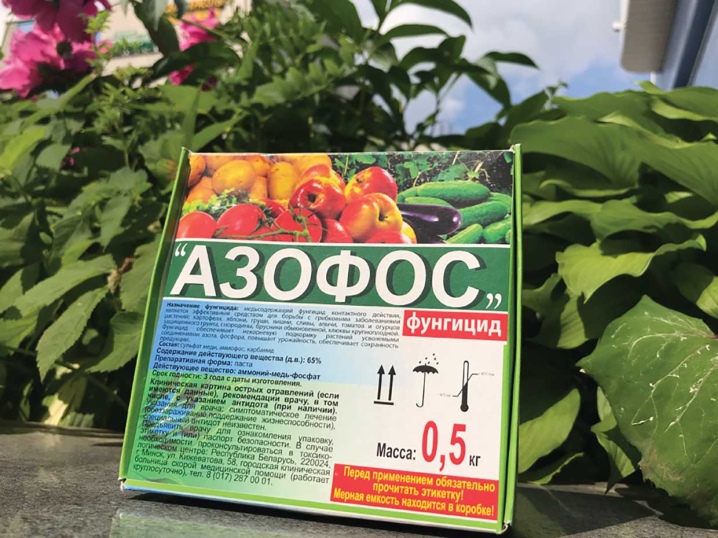
Among the pests, the most dangerous for the horse chestnut is the miner moth. The main problem is that there is no 100% effective remedy against these butterflies. The butterfly leaves the larvae on the tree, eating its foliage. Gradually, it remains with bare branches, it may die.
Fight miner moths will have to at least 2 seasons. They easily survive cold winters, so the set of measures is repeated on a regular basis. Injection therapies work well in this case. They are used by making injections along the diameter of the trunk, with penetration under the bark. They use special drugs such as Imidachloropid.
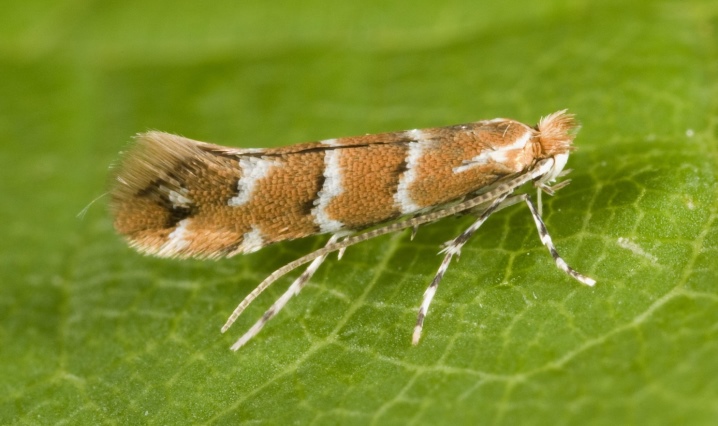
Also among the pests dangerous for chestnuts, one can single out May beetle - both in the larval stage and in the imago. The crown of a tree can be affected by sucking parasites - thrips, scale insects. Insects gnawing foliage - elm leaf beetle, elm beetle, quite willingly damage both arboreal and shrub forms of chestnut... Insecticidal treatment with appropriate chemicals will help to destroy them.
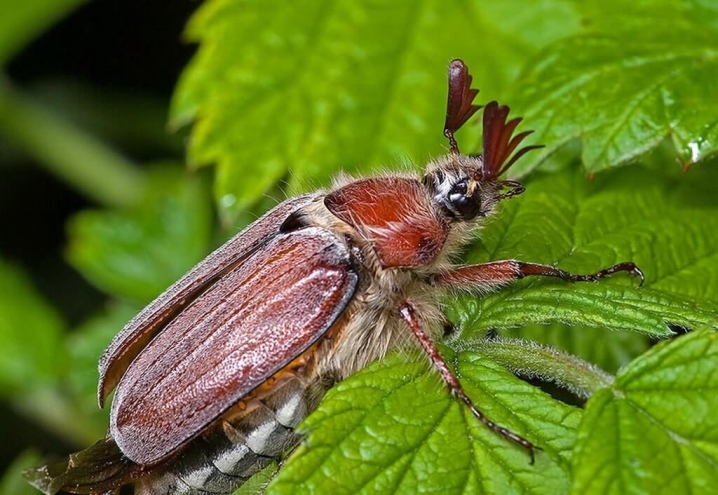
Application in landscape design
Horse chestnut is a plant that looks equally impressive as part of a complex landscape composition or in a solitary planting. Luxurious tall trees are used in gardens and parks.
They should be planted near the house only if the area of the site is large enough.Otherwise, the large size will create a strong shading, take up a significant part of the territory with its roots.
Shrub and hybrid forms of horse chestnut are best suited for planting in the local area. Many of them are grown as a standard crop, they are perfectly amenable to shearing and shaping. Dwarf subspecies rarely reach more than 4 m in height, and in the first 10 years their growth is limited to 2 m. The small-flowered shrub form in the conditions of the Moscow region stretches from 0.5 to 1 m, and in the beauty of flowering it is not inferior to other horse chestnuts.
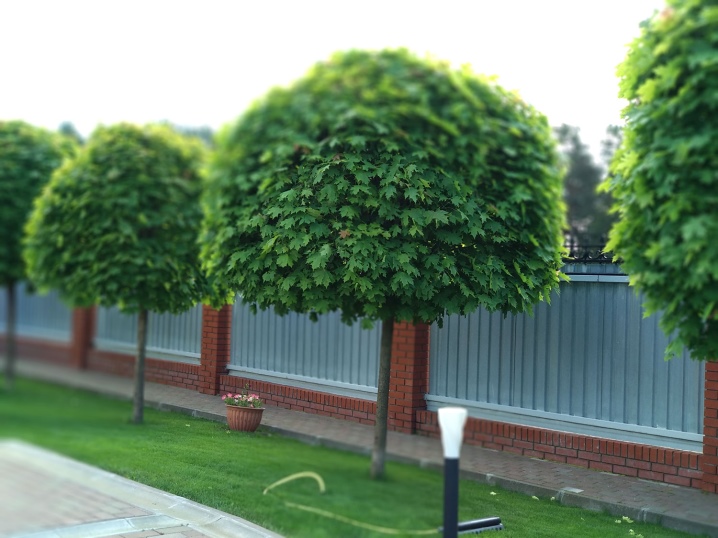
Forming a landscape composition, it is important to pay special attention to the harmonious combination of crown type, inflorescence shades. In the alleys, the alternations of white and pink "candles" of chestnut look interesting.
In individual plantings, it is better to give preference to large-sized ones.
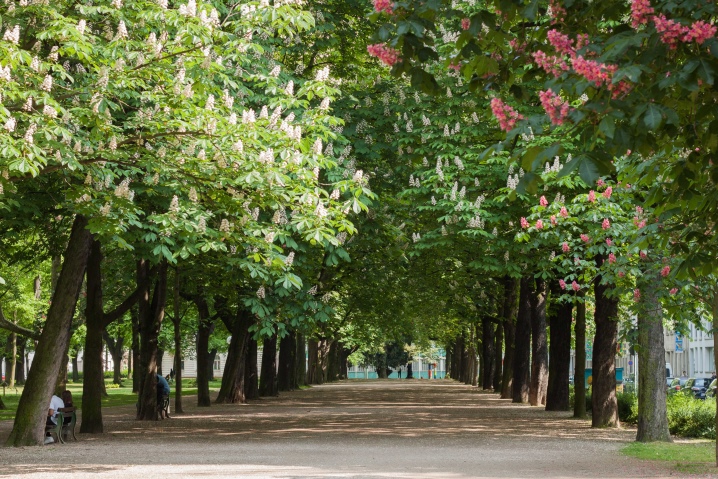
Examples of the successful use of horse chestnut in landscape design can be considered in more detail.
- The bush form during the flowering period will easily decorate the paths of a regular or landscape park.

- Planting of decorative woody forms of horse chestnut in alleys is especially effective if plants with different shades of inflorescences replace each other in it.
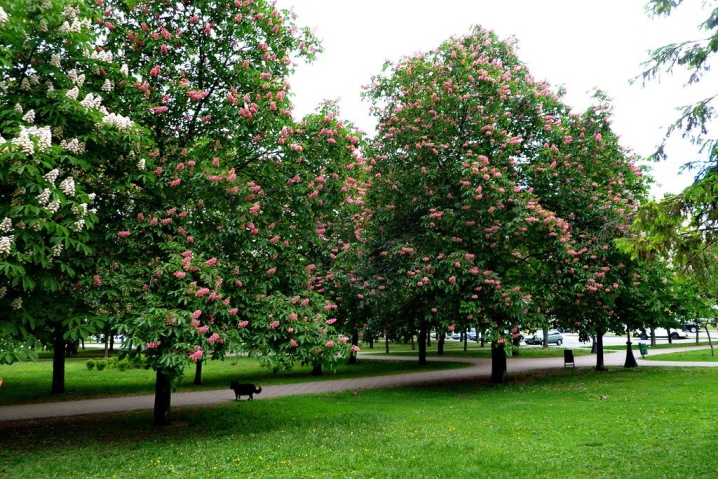
- A spectacular bush against the background of a perfectly flat lawn is an excellent solution for placing accents in the landscape of the yard.
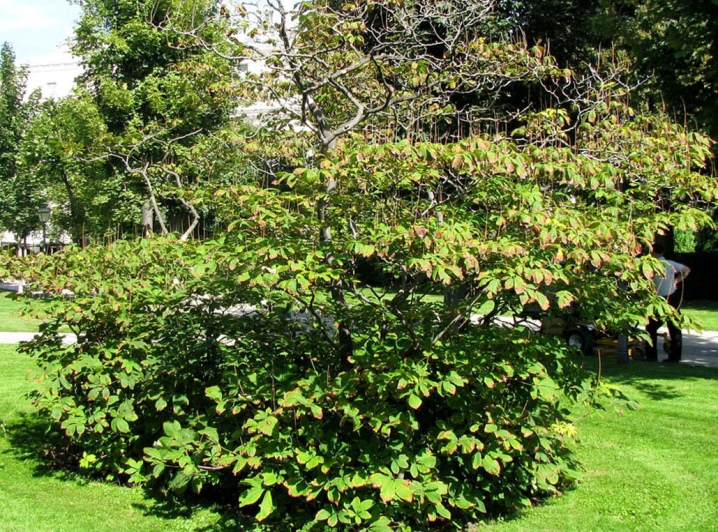
- An interesting solution is a tree in the center of the path. The area covered with gravel only brightens up the unusual cut of the tree foliage.
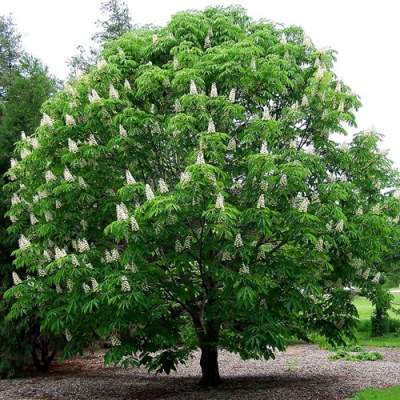
- A graceful standard form of a decorative horse chestnut with bright crimson inflorescences. A good choice for garden or park decoration.
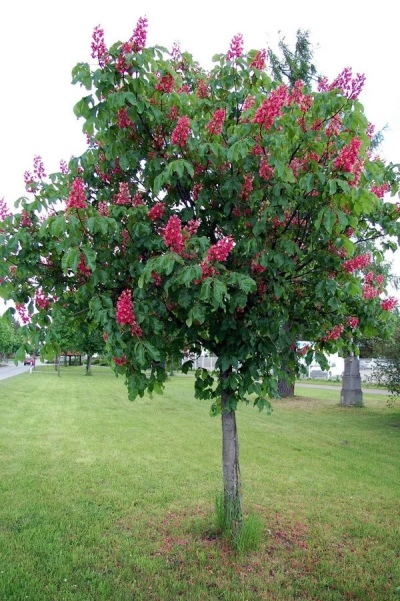



































































The comment was sent successfully.